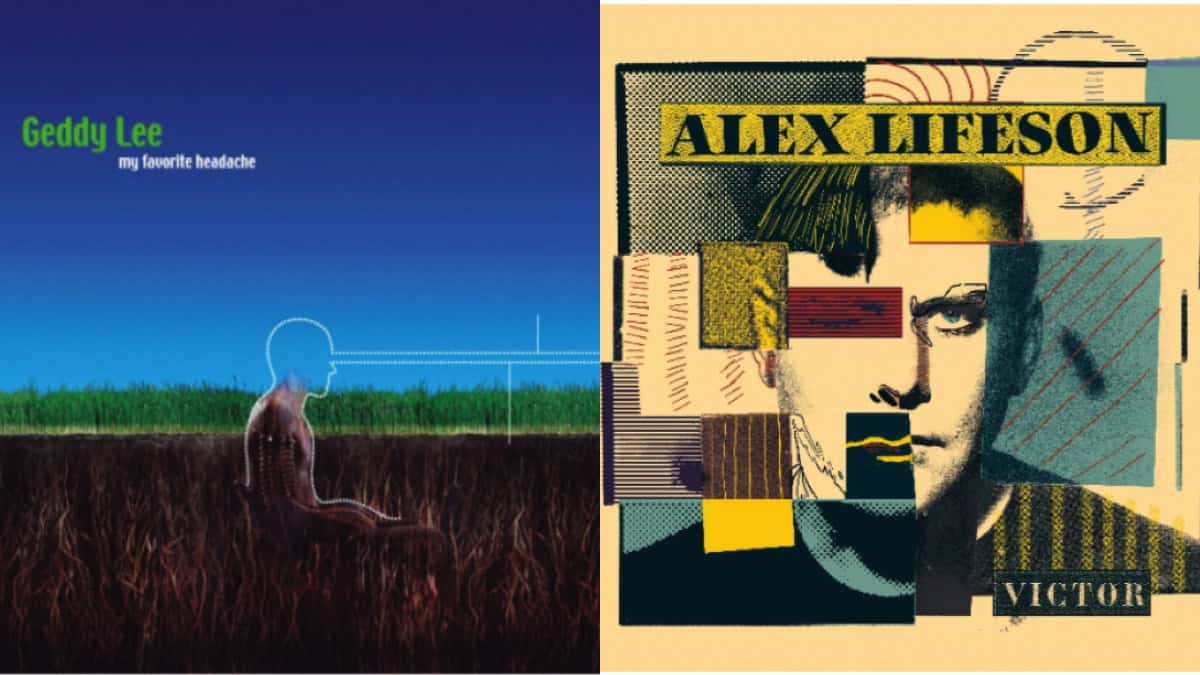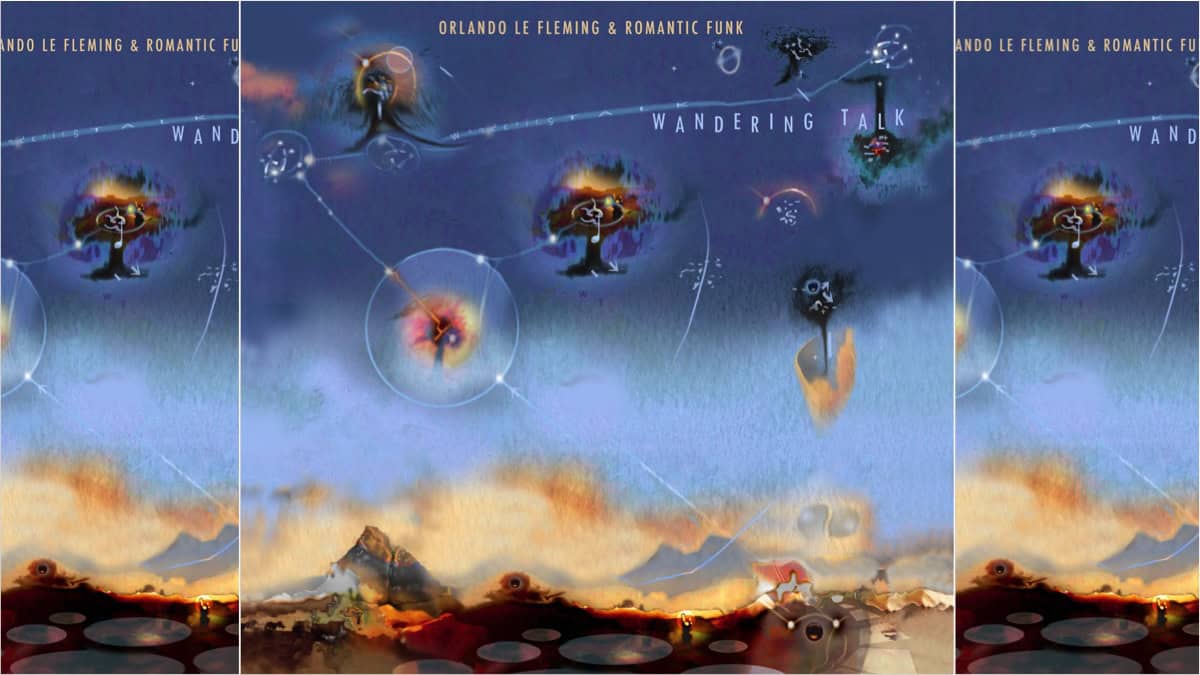Bass CDs
New Album: Leon Lee Dorsey, Cantaloupe Island

Leon Lee Dorsey, Cantaloupe Island…
Renowned bassist Leon Lee Dorsey continues his prolific streak with the issue of Cantaloupe Island, the latest album to be released on his Jazz Avenue 1 label and a continuation of his bountiful partnership with revered drummer Mike Clark. On their sixth collaboration since 2019, the stalwart rhythm section brings in virtuosic guitarist Russell Malone for an invigorating nine-track program of compositions by Horace Silver, Wes Montgomery, Prince and more. Cantaloupe Island will be released on February 17, 2023.
Since joining forces four years ago, the dazzling duo of Dorsey and Clark has released a plethora of critically acclaimed albums with a different featured guest each time. Prior to the pandemic, the pair joined Greg Skaff for the all-Thelonious Monk program on Monktime. Soon after, they brought in pianist Michael Wolff for the DownBeat Editor’s pick release Plays Sgt. Pepper, before turning attention to Thank You Mr. Mabern, the last album of the late piano giant Harold Mabern. Two more releases followed including the Latin jazz rumination Freedom Jazz Dance with pianist Manuel Valera and last year’s well-received soulful meditation on the blues with pianist Mike LeDonne, Blues on Top. While each release reveals a new musical side of this dynamic rhythmic pairing, their unique simpatico remains ubiquitous.
On Cantaloupe Island, Dorsey and Clark have tapped guitar great Russell Malone. “Russell Malone is an absolutely phenomenal musician,” said Dorsey. “Soulful and swinging and a brilliant improviser, he embodies the tradition and history of two of the greatest guitarists of all time, Wes Montgomery and George Benson. Russell can thrive and uplift any situation. He has had a longstanding partnership with my mentor and teacher, the legendary bassist Ron Carter. So it was a tremendous honor to have Russell on board with Mike and myself on our sixth project together. It was a dream come true and a perfect fit.”
Malone’s musical history with Ron Carter reaches back to the guitarist’s 1998 album Georgia Peach, his third as a leader, and has continued over time as a member of Carter’s Golden Striker Trio (first with pianist Mulgrew Miller, currently with pianist Donald Vega). Malone was also prominently featured on the recent PBS documentary, “Ron Carter: Finding the Right Notes.” The guitarist applies his harmonic sophistication and melodic invention with soulful aplomb on this spirited trio outing.
The triumvirate opens with the title track, Hancock’s “Cantaloupe Island,” with Clark alluding to his own broken rhythm syncopated patterns that he played on tour with the iconic keyboardist-composer back in the early 1970s on tunes like “Chameleon” and “Spank-a-Lee.” This is a more overtly funky take than Tony Williams’, which takes a rolling soul-jazz approach on the original recording from Hancock’s landmark 1964 Blue Note album, Empyrean Isles. A more syncopated version here, Malone’s deft jumping back and forth from urgent rhythm playing to rich chord voicings to cleanly picked, warm-toned single note lines, draws parallels to Grant Green. Clark’s loose, conversational approach behind the kit here sets the interactive tone that prevails throughout these nine tracks.
Horace Silver’s lively waltz “Barbara” (from 1975’s Silver ’n Brass on Blue Note) finds the remarkably polyrhythmic Clark tippin’ on the ride cymbal while maintaining that highly interactive pulse on the kit. Dorsey holds the fort on bass before unleashing one on his patented melodic solos as Malone supplies gentle arpeggios underneath. On an earthy, energized rendition of Silver’s “Sister Sadie” (from 1959’s Blowin’ the Blues Away on Blue Note), Malone digs in against Clark’s infectious Texas shuffle and Dorsey’s solid walking bass groove, flaunting some stinging chops that alternately signify early George Benson and latter-day T-Bone Walker.
“Bumpin’ on Sunset,” the Latin-tinged number from 1966’s Tequila that introduced a generation of guitar players to Wes Montgomery’s smooth octaves playing, is rendered here as an entrancing soul-jazz groover. Malone summons up some signature Wes octaves work along with deft use of chord melodies and flowing single-note lines. For a change of pace, they deliver a lush, relaxed rendition of the Ray Noble ballad, “The Very Thought of You,” with Clark’s sensitive brushwork setting a subdued tone for Malone’s minor key reharmonizations on that familiar standard. Dorsey’s sparse low-end presence here adds to the meditative nature of this hauntingly beautiful interpretation.
Shifting gears, their snappy rendition of Prince’s “Thieves in the Temple” (from his 1990 soundtrack album to the film Graffiti Bridge) has drummer Clark back in a funk bag with Malone carrying Prince’s vocals on guitar. Aside from supplying some insistent, double-timed comping and rich chord melodies, Malone also delivers some wicked string-bending and adventurous single-note statements on this pop number (which was also covered by Herbie Hancock on his 1996 album, The New Standard).
A waltz-time interpretation of the standard “That’s All” is underscored by Clark’s hip brushwork and Dorsey’s melodic bass lines. Malone’s chord melody work and fluid single-note lines punctuate the upbeat proceedings. When Clark switches to sticks and swings in a more forceful mode, the guitarist digs in and delivers with gusto, alternately running some flowing legato lines and more deft chord melodies. Dorsey’s agile, woody-toned bass solo here is right in the harmonically inventive tradition of his former teachers and mentors Ron Carter and Richard Davis. Clark returns to brushes as the trio takes it out in elegantly swinging fashion.
Their dreamy take on the Kenny Burrell dark-hued ballad, “Listen to the Dawn,” is a veritable clinic in the art of chord melody playing by special guest Malone. They conclude the program with a laid-back, loping rendition of Wes Montgomery’s “The Thumb,” an oft-covered tune that also first appeared on Wes’ 1966 Verve debut, Tequila. Clark engages in some fantastically interactive playing here with Malone while Pittsburgh native Dorsey walks in the tradition of another legendary Pittsburgher, Ray Brown. Clark takes it down to a whisper behind Dorsey’s remarkably fluid bass solo before Malone returns to exchange vigorous eights with the drummer.
This stellar outing is yet another example of the musical synergy that Clark and Dorsey have forged together over time. And Russell, one of the classiest and most acclaimed guitarists on the jazz scene today, brings something very special to that ongoing partnership on Cantaloupe Island.
Liner notes by Bill Milkowski.
Tracklisting:
- Cantaloupe Island (5:52) (Herbie Hancock)
- Barbara (4:59) (Horace Silver)
- Sister Sadie (4:35) (Horace Silver)
- Bumpin’ on Sunset (5:06) (Wes Montgomery)
- The Very Thought of You (6:48) (Ray Noble)
- Thieves in the Temple (6:07) (Prince)
- That’s All (5:51) (Bob Haymes)
- Listen to the Dawn (6:26) (Kenny Burrell)
- The Thumb (7:38) (Wes Montgomery)
Visit online at leonleedorsey.com
Bass CDs
Reissue: Geddy Lee’s My Favourite Headache and Alex Lifeson’s Victor

In an exciting announcement for Rush fans and rock enthusiasts alike, Anthem Records in Canada and Rhino Records will reissue the first-ever solo albums of Alex Lifeson and Geddy Lee. Lifeson’s 1996 album Victor and Lee’s 2000 offering My Favourite Headache will be re-released on August 9, 2024, in various formats, including a range of vinyl configurations.
My Favourite Headache, Geddy Lee’s only solo album to date, was initially released on November 14, 2000. This reissue marks its first vinyl pressing since a limited-edition Record Store Day exclusive in 2019. The fourth side of the album features two instrumental mixes. Produced by Lee, Ben Mink, and David Leonard, the album includes contributions from Mink and drummers Matt Cameron (Soundgarden/Pearl Jam) and Jeremy Taggart (Our Lady Peace).
Victor, originally released on January 9, 1996, marks Alex Lifeson’s solo debut. Lifeson took on the roles of songwriter, producer, and mixer for this album. For the first time, Victor will be available on vinyl, featuring a complete remix by Lifeson himself to enhance the audio quality. The fourth side of the album includes four instrumental tracks previously exclusive to Lifeson’s website. Guest artists include lead vocalist Edwin from I Mother Earth, Primus bassist Les Claypool, and Canadian powerhouse vocalist Lisa Dalbello. The 15-song collection is paired with striking 2024 reimagined artwork by Fantoons Animation Studios.
For more details on the Geddy Lee reissue and to preorder, https://lnk.to/MyFavouriteHeadache
For more details on the Alex Lifeson reissue and to preorder, https://lnk.to/AlexLifesonVictor
Bass CDs
New Album: Ben Wolfe, The Understated

Acclaimed bassist and composer Ben Wolfe is thrilled to announce the August 9, 2024 release of The Understated.
This evocative new album features a collection of new original compositions by Wolfe paired, with re-imaginings of some of the composer’s classic material, with a particular emphasis on the ballad song-form. The album features ten tracks, five of which are ballads – a bold move for any composer – Wolfe creates a cohesive narrative here that challenges the listeners perception of the classic ballad. The Understated features Wolfe alongside artists who make up the very frontline of modern jazz, including pianist Orrin Evans, tenor saxophonist Nicole Glover, drummer Aaron Kimmel, guitarist Russell Malone and pianist Sullivan Fortner.
Wolfe has always been drawn to finding beauty in subtlety. He perceives a certain tranquility and elegance in the Coltrane Quartet, Louis Armstrong’s Hot Fives and Sevens, the legendary Miles Davis bands and rhythm sections, and the music of Charlie Parker. While he, of course, revels at the immense world-building energy of this music, it’s the “other side” – the elusive, magical aspect that endlessly captivates him – the understated. The composer draws inspiration most from the ensemble work of these hallmark jazz ensembles. Despite the individual parts being extraordinarily beautiful on their own, the musicians in these archetypal ensembles play only what is needed to serve the music, paying particular attention to the band-sound more-so than their individual sound. The Understated embodies this ethos with a tremendously impactful ensemble-oriented approach.
Wolfe sought to continue the thread started by “Lullaby in D” from his previous critically acclaimed release Unjust. Wolfe indicates, “Something about that take was so perfect to me. It had been brought to life, and it had that ensemble thing.” Wolfe assembled the quartet who recorded “Lullaby” (including longtime collaborator Orrin Evans, as well as recent frequent collaborators Aaron Kimmel and Nicole Glover) and two very special guests, Russell Malone and Sullivan Fortner. The recording process took place in one room with no headphones or isolation booths, further emphasizing the group’s collective awareness.
This record succeeds in bringing Wolfe’s expansive music to life through extremely conscientious group playing. Nothing is forced or pushed; everything that needs to be stated is stated. The single from the album, “Waltz,” encapsulates the spirit of the project. Wolfe says, “I view albums like a complete painting, so singles have been difficult for me. This song is very much in the spirit of the whole but doesn’t give away the record.” The piece features a sentimental melody delivered with grace by tenor saxophonist Nicole Glover, before Glover and Evans embark on stirring solos dancing in and out of the tune’s harmony.
Other new original compositions featured here include “Ballad in B”, which perhaps best demonstrates the group’s stunning cohesion. This tune is a refreshing diversion as it features a serene repeated melody without overt melodic improvisation. The following track, “Anagram”, begins with Kimmel’s rhythmic refrains and a unison melody played by Glover and Wolfe and is a true ensemble piece. On this track, Wolfe shines with a lyrical solo. The moody short interlude “So Indeed” is a lyrical masterwork that leaves the listener wanting even more. “Beautiful You” features master guitarist Russell Malone on the track’s melody. The emphasis here on restrained lyricism is a prime reminder of the old adage “it’s not the notes you play, it’s the notes you don’t play”. Each pocket of space in between melodic moments leaves room for the listener to breathe deeper and deeper into the song. The driving “Triangle Man” features fantastic improvisation from Glover and Kimmel. The tender “Barely Spoken” concludes the album with a feature for pianist Sullivan Fortner.
The album also weaves in references to Wolfe’s past works, creating a personal musical universe. “The Poet Speaks” is the opening track on his first record, 13 Sketches. “Occam’s Razor” was composed years ago for a collaboration with a choreographer and painter, and was a much different composition in its original form. “Love Is Near” was originally found on The Whisperer. With ballads in particular, Ben uses voicings and sounds that represent certain things to him, intentionally referencing his other compositions to generate connections between his songs.
Wolfe’s tremendous compositions on this album are also influenced by the group of musicians that he assembled for this release. Wolfe remarks “One of the things these five musicians share in common is that not only are they true ensemble players, they will always play something unexpected and special.” Listeners will find calm and beauty within the ensemble performances throughout The Understated.
Visit online at benwolfe.com/
Bass CDs
New Album: Orlando le Fleming, Wandering Talk

Bassist, band leader, and composer Orlando le Fleming continues to make music that crosses genres as readily as he crosses the Atlantic, with this new album ‘Wandering Talk’, to be released physically on 23rd August via the UK’s premiere jazz label, Whirlwind Recordings.
After 20 years in New York City, he’s back in his native UK, forging new pathways and renewing old partnerships. His love for the acoustic tradition continues unabated alongside his deep affection for the robust, muscular electric fusion that emerged in the 1980s, and he has received critical acclaim from media including The Guardian, Financial Times, Jazzwise, and All About Jazz among others. He has also toured and recorded with some of the world’s greatest jazz musicians including Branford Marsalis, Kurt Rosenwinkel, Antonio Sanchez, Ari Hoenig, and Wayne Krantz.
The Romantic Funk project was born in New York’s legendary 55 Bar to explore that legacy: now the new album ‘Wandering Talk’ builds on the critical acclaim generated by ‘The Unfamiliar’ (2020), building on the framework with a set of collaborators that brings together London and New York, past and present, acoustic, and electric, and merges it all into a spectacular whole.
Following the same principles that served the project in NYC, le Fleming booked four Friday nights at London’s renowned Vortex Club to workshop the music that would become the album, with a rotating cast of players which he honed down into the final line-up. Old London friends Tom Cawley (piano/keys) and James Maddren (drums) completed the rhythm section. New acquaintance Nathaniel Facey was picked from the ranks of the UK’s brightest young saxophone players. NYC stalwart Philip Dizack flew in from the US to play trumpet and reaching back to Orlando’s school days and forward to his own family, one-time classmate Chris Martin (Coldplay) and his own daughter Nadia combined to provide vocals on a special setting of Rumi’s poetry.
As before, the music combines fusion’s flash and fire with a contemporary sensibility. This time, Orlando’s questing spirit sends his superb band forward to investigate fresh areas of creativity in dynamic and texture.
Visit online at orlandolefleming.com
Bass CDs
Album: John Entwistle, Rarities Oxhumed – Volume Two

Album: John Entwistle, Rarities Oxhumed – Volume Two
Rarities Oxhumed – Volume Two is the second of the series of posthumous releases coming from John Entwistle.
Rarities Oxhumed – Volume Two is a compilation that was curated by drummer Steve Luongo, who served as John Entwistle’s producer, bandmate, business partner and good friend for many years. As Luongo states, “When I agreed to do two volumes of John Entwistle rarities, I knew volume two had to be even better than volume one. It is!” The collection of songs on Volume Two are from his years with the John Entwistle Band and include re-mastered versions of studio tracks including “Endless Vacation”, alternate mixes of tracks like “Sometimes”, and live tracks including The Who cuts “Real Me”, “Long Live Rock” and an epic version of “Young Man Blues”. The latest preview track to be released is the Who cut “Had Enough.”
Listen to “Had Enough” here: push.fm/ps/hadenough
Rarities Oxhumed – Volume One was quickly embraced by longtime fans as it featured gems like “Bogey Man” featuring Keith Moon, “Where You Going Now” (demo for the Who), and a raw live version of “Trick of the Light” recorded during the John Entwistle Band’s final tour in 2001. Deko Entertainment is thrilled to have been able to bring both volumes of this unearthed music of John Entwistle to the fans and forever solidify him as one of the greatest rock musicians ever.
For more information, visit online at dekoentertainment.com/john-entwistle
Bass CDs
Album Review: Mark Egan, Cross Currents

Mark Egan, Cross Currents…
It is exciting every time I get a new album from Mark Egan as he is such an amazingly versatile player and I never know what to expect (except for excellent artistry!) In his latest release, Mark has teamed up with Shawn Peyton on drums and Shane Theriot on guitar to bring us “Cross Currents”.
This collection of eleven tracks transports me to the Gulf Coast (New Orleans specifically). Mark’s fretless basses lay down a solid groove and lots of juicy solo work for this rootsy collection of funk, ambient, swamp-rock, second line, ballads, Cajun and even Indian Raga.
This trio is super-tight and the musicianship is flawless as each member has ample opportunity to shine. Even though each player is very talented in their own right, I feel that the collective energy is greater than just the sum of the players on this album. Each musician contributed to composing music for this project but the lion’s share are Mark’s original pieces.
I spent the summer of 1981 in New Orleans and this wonderful music takes me back to those fond memories. I participated in a wacky raft race on Lake Ponchatrain and this opening track elicits images of fun, sunshine, music, and great food.
This is another superb album that everyone will enjoy. Get your copy today! Cross Currents is available online at Amazon.com. Visit Mark online at markegan.com.





















